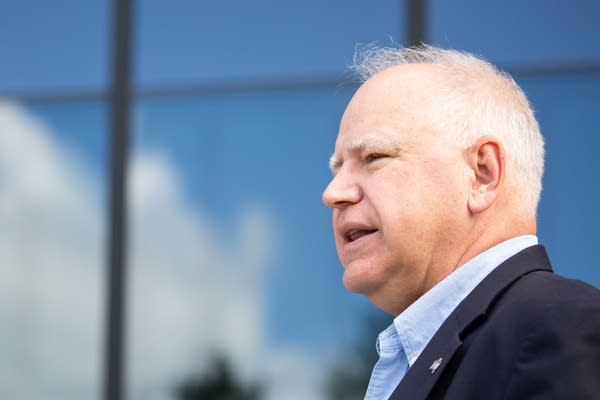After turbulent first term, Walz casts himself a 'steady hand'

Gov. Tim Walz speaks at a press conference about at-home COVID-19 tests available for students to take home from school outside of Carver Elementary School in Maplewood, Minn., on Wednesday, Oct. 6, 2021.
Evan Frost | MPR News
Go Deeper.
Create an account or log in to save stories.
Like this?
Thanks for liking this story! We have added it to a list of your favorite stories.


